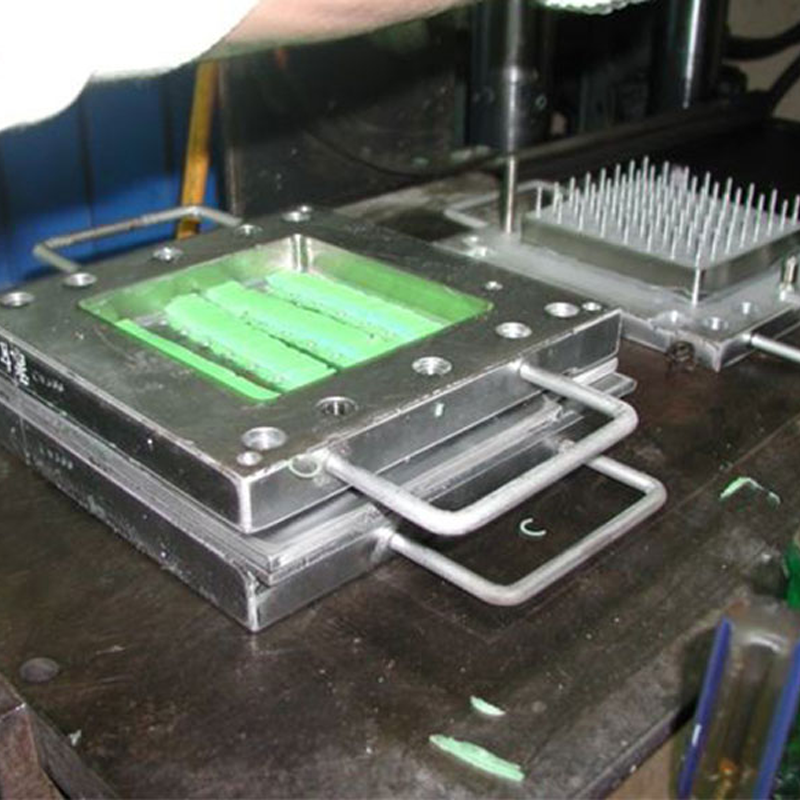Compression molding is a well-established manufacturing process that is used primarily to mold high-strength, precise parts, especially with thermoset materials. This technique stands out due to its ability to create dimensionally consistent parts whether the production volume is low, medium, or high. The process involves placing a preheated material, often a thermoset plastic or rubber, into a mold cavity, where heat and pressure work together to force the material into intricate mold details, resulting in a solidified part.
Key Aspects of Compression Molding
-
What is Compression Molding?
– Compression molding is used to shape materials like plastics, natural rubbers, composites, and elastomers by applying heat and pressure. After placing the material in a mold, both halves are compressed, and the heat activates the material, which flows into the detailed mold features. Once cooled and solidified, the material takes its final shape.
– The technique is popular across various industries for producing high-strength, durable parts—ranging from automotive to kitchenware—due to its efficiency and adaptability to complex shapes.
-
Types of Compression Molds
– Flash Molds: These molds allow for the escape of excess material at the parting line, resulting in some material waste. They’re ideal for lower-cost raw materials and can create intricate shapes.
– Positive Molds: These molds use an accurate pre-measured amount of material, leading to no waste. They’re best for expensive raw materials and deeper designs, though the mold itself is more costly.
– Semi-Positive Molds: Combining features of both flash and positive molds, semi-positive molds offer flexibility in material feeding and are ideal for intricate shapes. However, they too come at a higher cost.
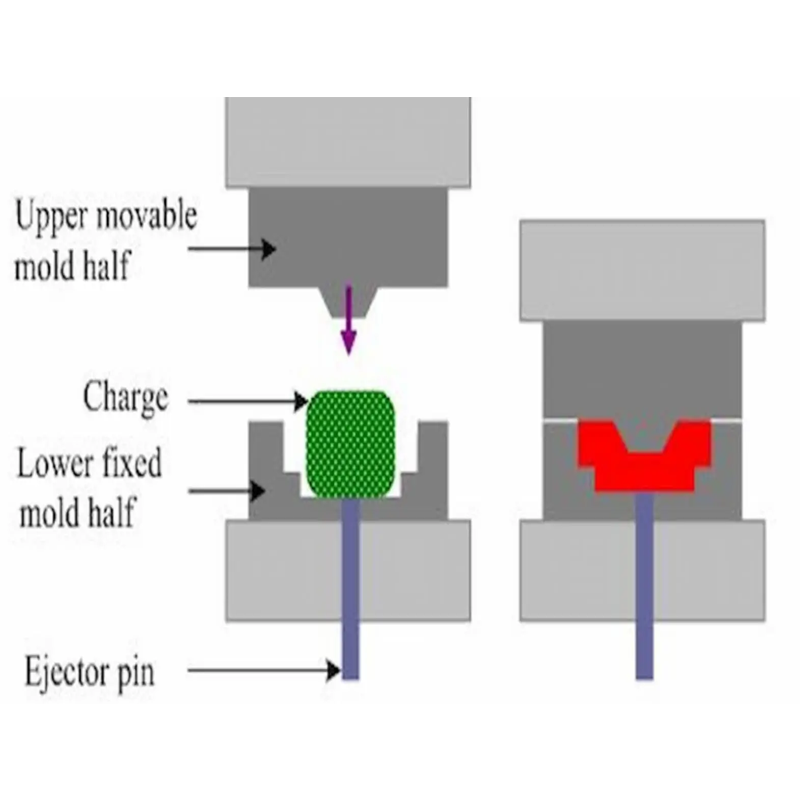
-
Common Compression Molding Machines
Compression molding machines provide the necessary force to compress the mold halves and shape the material. Depending on the application, different types of machines may be used:
– Hydraulic Compression Molding Machines: These machines are versatile, offering precise temperature control and uniform pressure. Suitable for a wide range of part sizes, including intricate components like automotive body panels.
– Cold Compression Molding Machines: These machines operate without external heat, relying on the material’s own heat for molding. Ideal for parts where heat might degrade material properties.
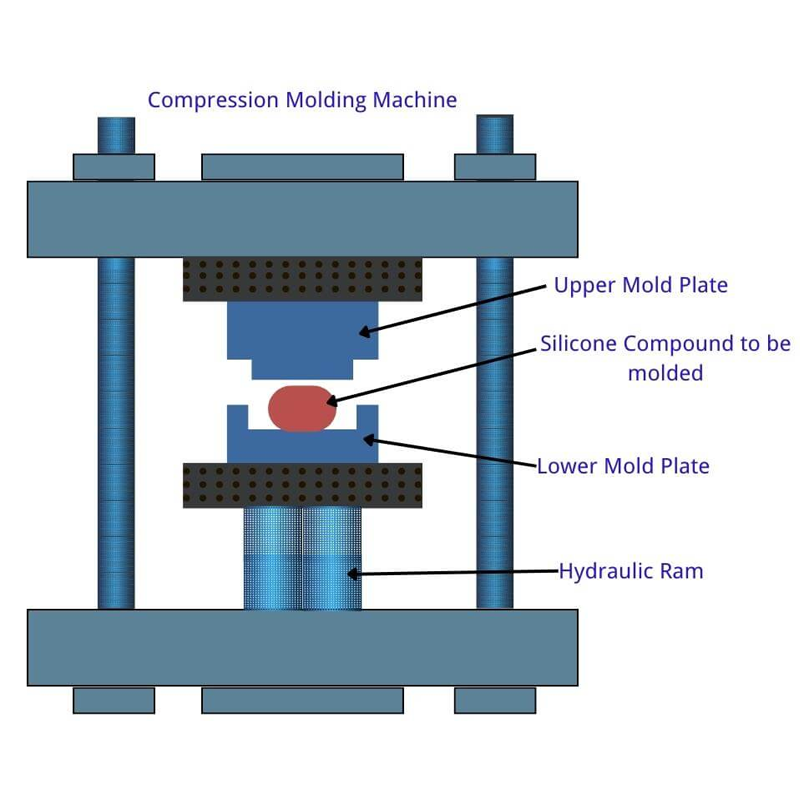
– Wet Compression Molding Machines: These machines are primarily used for composites. The material is pre-impregnated with resin (“prepregs”), and the mold applies both heat and pressure to activate the resin and create strong composite parts.
– DIY Compression Molding Machines: For educational purposes or small-scale production, DIY compression molding machines are often used by hobbyists, researchers, and small businesses. While not suitable for large-scale production, they are ideal for prototyping.
-
The Compression Molding Process
The compression molding process follows several key steps:
– Material Preparation: Materials are cleaned, cut, and preheated to ensure uniformity and proper flow into the mold.
– Mold Preparation: Molds are often made from durable materials like steel or aluminum. CNC machining, die casting, and 3D printing are used to create molds with high precision.
– Loading the Material: The material is precisely placed into the mold cavity, ensuring even distribution.
– Molding: The two halves of the mold are brought together with pressure, forcing the material to flow into the cavity.
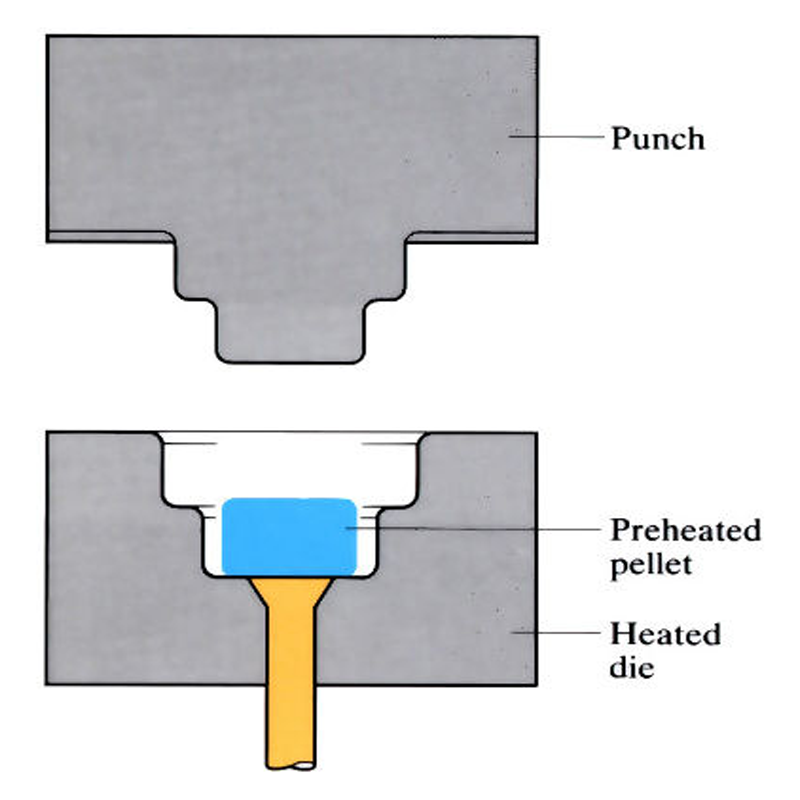
– Curing: Heat and pressure activate the material, hardening it into the final shape.
– Cooling: The mold is cooled either naturally or using air/water cooling to solidify the material.
– Part Removal: The mold opens, and the part is ejected, typically using an automatic ejection system.
– Trimming and Finishing: Finally, excess material or flash is trimmed, and finishing touches like sanding, polishing, or coating are applied.
-
Common Compression Molding Defects
Defects can occur during the compression molding process, but with proper control, they can be minimized:
– Blisters: Raised areas on the surface, often due to trapped air or moisture.
– Chips: Can be caused by improper handling or brittle materials.
– Discoloration: Resulting from improper material mixing, oxidation, or UV exposure.
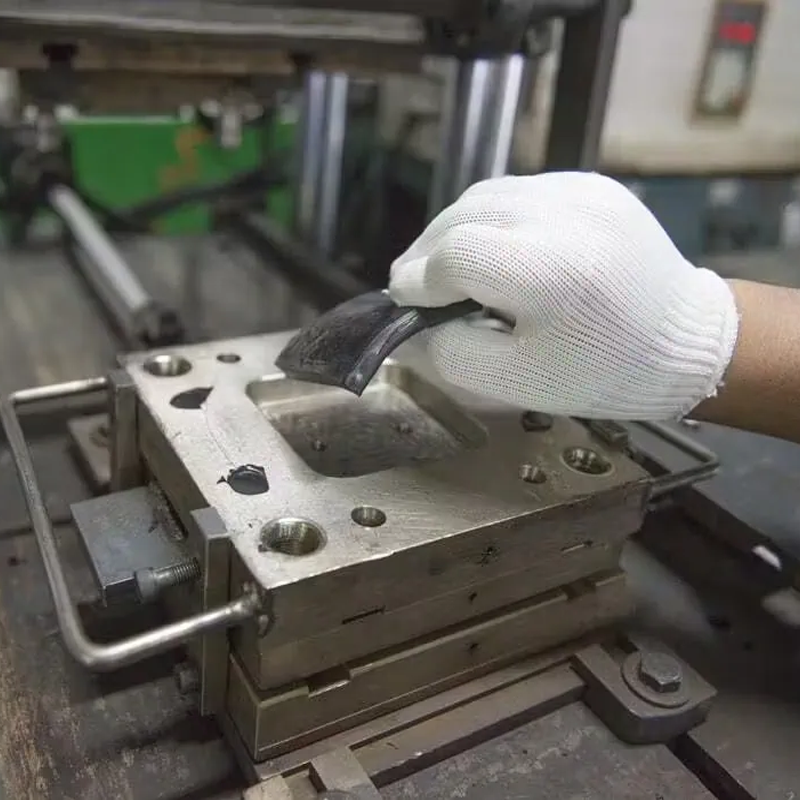
– Shrinkage: Uneven cooling or quick solidification can cause parts to shrink.
– Flow Lines: Caused by uneven material flow or rapid cooling.
– Short Shots: Insufficient material or premature cooling can lead to incomplete parts.
-
Compression Molding Design Guide
Design considerations are crucial for ensuring a successful compression molding project:
– Wall Thickness: The ideal thickness ranges from 1.5 to 6 mm, but this depends on the part’s application and curing time.
– Undercuts: Parts with undercuts require special design attention, ensuring that features are machinable and can be ejected properly.
– Insert Molding: If your design includes inserts (e.g., metal or other parts), they must be positioned accurately and bonded well during molding.

– Draft Angles: Slight tapers on vertical surfaces make it easier to remove the part from the mold without damaging it.
– Snap Fits: These features, used to join parts without mechanical assemblies, must be carefully positioned in the design.
– Texture: Ensure the desired surface finish is considered during design, as the texture can impact both function and aesthetics.
-
Materials for Compression Molding
Compression molding can be used with a variety of materials, depending on the application:
– Thermoset Plastics: Popular for their heat resistance and electrical insulating properties. Examples include epoxy, phenolic resin, and polyester.
– Thermoplastics: Malleable materials that can be reshaped multiple times. Examples include ABS, polypropylene, and polycarbonate.
– Rubbers: Used for parts that require elasticity, such as seals, gaskets, and hoses. Common rubbers used in molding include silicone, nitrile, and EPDM.
– Composites: High-strength materials made by combining thermosets with fibers like glass, carbon, or aramid.
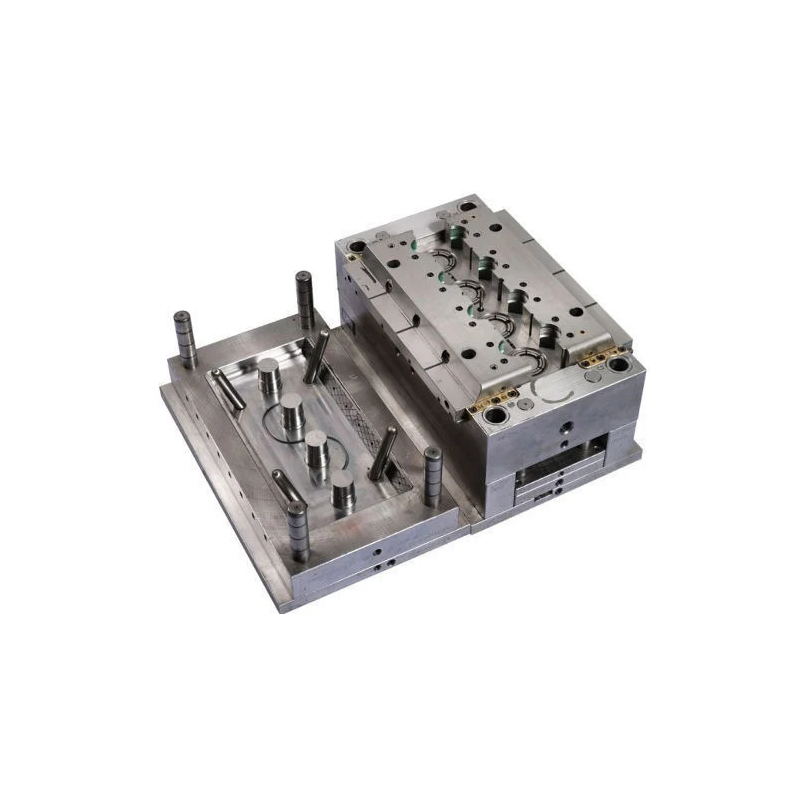
-
Applications of Compression Molding
Compression molding is used in many industries, producing parts like:
– Automotive: Fenders, dashboards, engine components.
– Aerospace: Structural components like C-channels, fuselage panels, and door frames.
– Medical: Parts like prosthetics, syringe stoppers, and diagnostic equipment housings.
– Household: Items like kitchen utensils, bathroom accessories, and melamine products.
-
Advantages and Disadvantages
– Advantages:
– Cost-effective tooling
– Ability to mold complex shapes
– High consistency and uniformity
– Good surface finish and dimensional accuracy
– Suitable for large and heavy parts
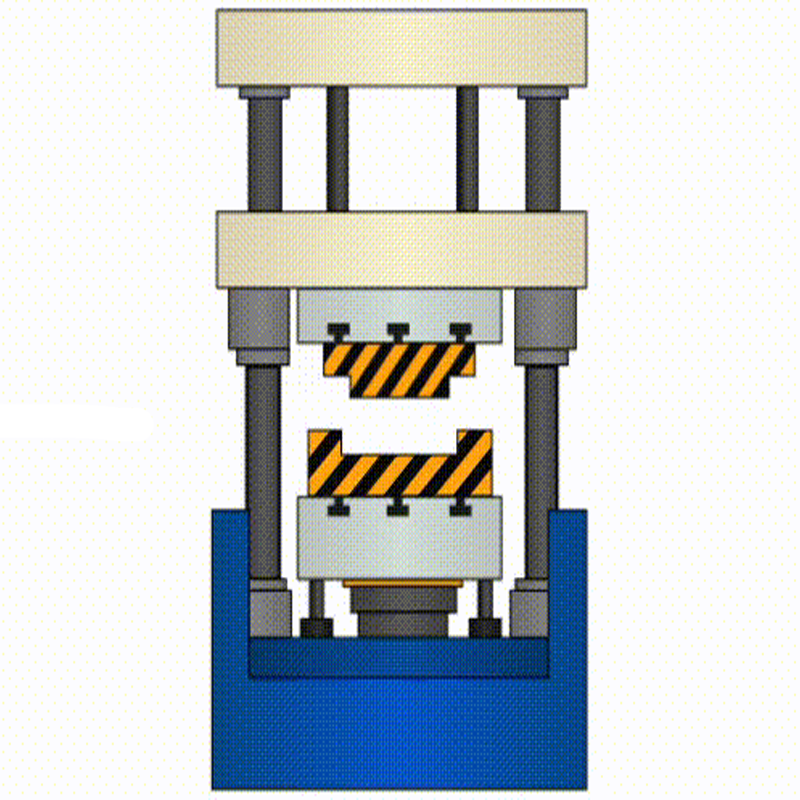
– Disadvantages:
– Longer cycle times compared to injection molding
– Risk of flash formation requiring additional trimming
– Limited for parts with intricate internal geometries
– Higher carbon footprint compared to some other processes
-
Comparison with Other Molding Techniques
When comparing compression molding with other techniques like injection molding or rotational molding, it’s important to note:
– Injection Molding: Ideal for parts with high precision, thinner walls, and faster production cycles.
– Rotational Molding: Suitable for hollow parts, often used for large-volume, low-weight products.
– Compression Molding: Best suited for high-strength, thick-walled parts with a smooth finish, especially when material waste is a concern.
![]()
Conclusion:
Compression molding is a versatile and cost-effective molding process widely used in various industries for manufacturing durable and high-quality parts. Its ability to create precise parts with varying thicknesses and intricate geometries, combined with material flexibility, makes it a popular choice for automotive, aerospace, medical, and household products. However, its longer cycle times and potential for defects require careful planning, tooling, and machine selection to ensure optimal results.

